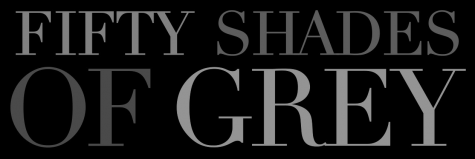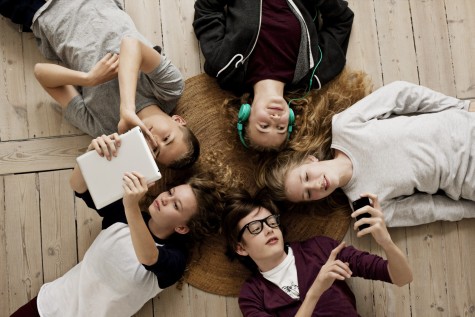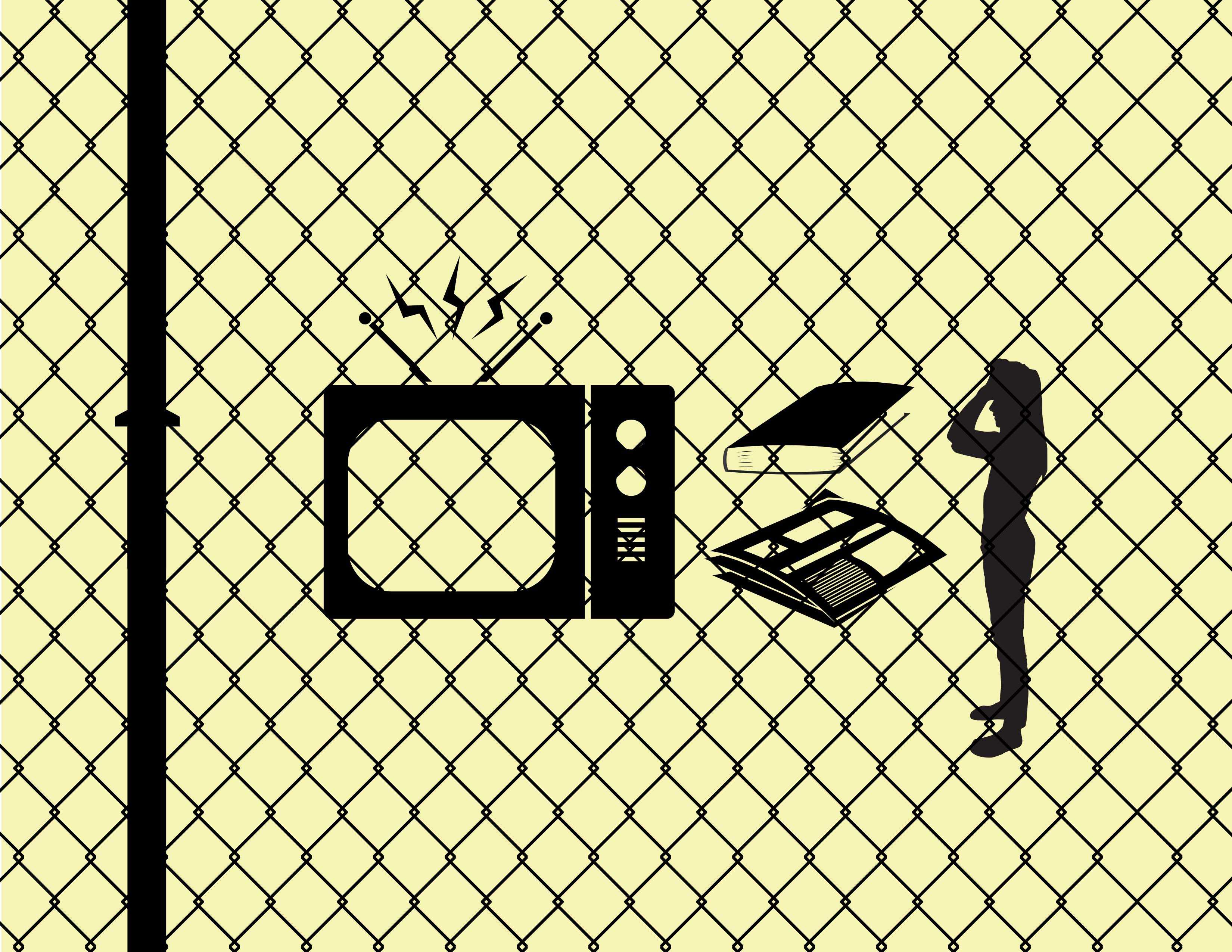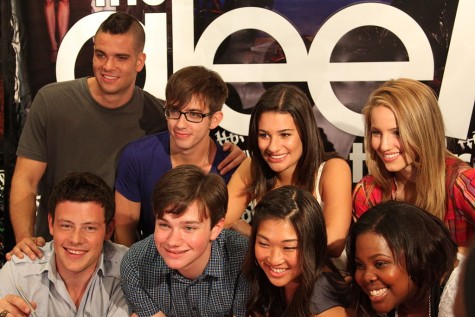Turning love invisible
How the media warps what we often think about when we think about love.
May 23, 2015
Ignoring the protests of one’s partner may be acceptable, even sexy, in sensational sensual fantasy like $248.7 million-earning novel-turned-movie “Fifty Shades of Grey.”
In real life, though, actions like those portrayed in the film can easily warrant lawsuits.
“Fifty shades of grey” follows the romance between 21-year-old college student Anastasia Steele and 27-year-old businessman Christian Grey, who introduces Anastasia to the world of sadomasochism. The first book of the trilogy sold over 16 million copies, earning $95 million, while the film adaptation became the most successful 18-and-over film of all time.
Mohammed Hossain, a 19-year-old student at the University of Illinois at Chicago, was charged with sexual assault on Feb. 24 for performing a “re-enactment of scenes” from the “Fifty Shades of Grey” film on a 19-year-old woman, according to the Chicago Tribune.
During the sexual encounter between the two college students, Hossain allegedly bound her arms to the bottom of a bed, used a necktie to cover her mouth, and hit her repeatedly with a belt as she protested.
Although Hossain was later cleared of all charges on March 19 after testimony that the sexual activity began as consensual, the link between Hossain’s actions and “Fifty Shades of Grey” may be more than an isolated example.

According to the Critical Media project, individuals in the U.S. engage with media for eight hours a day on average for almost 365 days a year. That number rises to 11 hours a day when “media multi-tasking” is taken into account.
Dr. Amy Bonomi, Professor and Chair of the Human Development and Family Studies Department at Michigan State University, was “astounded” by the relationship between the two main characters of “Fifty Shades of Grey.”
She took on the task of analyzing “Fifty Shades of Grey” after her graduate students reported that national standards of domestic violence reflect aspects of Christian and Anastasia’s relationship.
“We essentially found that the relationship does mimic what we see in many domestic violence relationships, with Christian stalking Anastasia, controlling every aspect of her behavior, pressuring her to participate in sexual activity that she’s uncomfortable with and using alcohol to lower her defense, and then minimizing the abuse he inflicts upon her,” she said in a phone interview.
In 2014, Bonomi authored the Journal of Women’s Health piece “Fiction or Not? Fifty Shades is Associated with Health Risks in Adolescent and Young Adult Females,” the first study to examine the link between health risks and popular fiction.
Much of Dr. Bonomi’s research focuses on the long-term effects of domestic violence and child abuse, including possible health effects, such as depression, anxiety, asthma or disordered eating.
According to her study, women who read at least one of the three novels in the franchise were more likely to have had “a partner who shouted, yelled, or swore at them” and also “to report fasting and using diet aids at some point during their lifetime” in models that accounted for age and race. Women who read the whole trilogy were “more likely to report binge drinking in the last month and to report using diet aids.”
“The books are normalizing and glamorizing violence against women, and yet the book is being cast as very erotic and sexually liberating to women,” Bonomi said. “We can’t necessarily say that Fifty Shades or any other aspect of popular culture causes adolescents to engage in any particular type of behavior. But popular culture creates the underlying context that adolescents are interacting with, so if the messages are glamorizing violence against women, then there may be some uptake of those particular messages.”
Individuals more misguided than malicious, such as Mohammed Hossain, take their cues on sex and romance from “Fifty Shades of Grey” and provide an example of the media’s role in influencing the cultural climate of love.
Erotica and pornography influence and contribute to the sexual behaviors of adults and youth alike, a concept consistent throughout history. But the development of the Internet has caused the prevalence and accessibility of porn to skyrocket.
According to Stop Porn Culture, there are over 68 million daily searches for pornography in the United States alone, and 88.2 percent of top rated porn scenes contain aggressive acts. Recent psychological studies indicate that, internationally, adolescents use porn “to gain information about real life sex.”
The media not only shapes the way sexual subcultures are perceived by mainstream America, but also affects viewers’ perceptions and beliefs concerning LGBT (lesbian, gay, bisexual and transgender) individuals.
Upper School History Department Chair Donna Gilbert came out as a lesbian in two stages, nine years apart. While her first attempt was, in her opinion, unsuccessful due to a lack of support, her second attempt, occurring nine years later at the age of 28, was spurred on in particular by the “Lesbian Avengers.”
“They pierced everything and had all this ripped clothing and they had that sort of activist sentiment,” Gilbert said. “They literally walked down the halls wearing shirts that said ‘I am a lesbian’ in 1991, and nobody did that. They got harassed, but not a lot, and I remember looking at them and going home and feeling ashamed that these kids were 17, and I was 28 and still in the closet. That’s when I came out to the school community.”
At the time, Gilbert, who was teaching History at Concord-Carlisle High School in Concord, Massachusetts. She received her Bachelor of Arts degree from Trinity College and her Master’s Degree in Classical Archaeology at Tufts University. She noted that the lack of LGBT representation in the media limited hers and many others’ perceptions of what was and wasn’t possible within the realm of romance for LGBT people.
“The media is sort of the way we figure out what’s safe and what’s not safe in the culture out there, and so when I was growing up there were no real images of lesbians [in media],” she said. “The entertainment industry assumes that the general population doesn’t want to see images and movies and television of LGBT people. Although they’re becoming more common now in television and in movies, they tend to be fringe characters, and limited and cliched in how they act. Even though we’re making progress, the sense that LGBT people are complex and don’t fit into these clichéd stereotypes is not being portrayed very well, and that’s still played to a heterosexual audience.”
Gilbert finds that she enjoys watching Ellen DeGeneres, a comedian and TV show host who came out as a lesbian in 1997 on the Oprah Winfrey show and now hosts TV talk show “Ellen.”
“I watch the ‘Ellen’ show every single day,” she said. “I think she’s a positive representation of the LGBT community.”
Now, Gilbert is a member of the National Center for Lesbian Rights, an organization that advocates for LGBT rights and focuses on issues such as marriage equality. Gilbert also mentioned that she, along with fellow LGBT faculty members, “felt like we wasted our twenties” as closeted individuals.
“While everyone else was dating and marrying and having families, we weren’t. It’s great if you can have your epiphanies when you’re 17 and be open about who you are, so that you can have your epiphanies when you’re 17 and be open about who you are, so that you can do the things that straight kids do,” she said.

In terms of quantity, LGBT representation in the media has been on the upswing, peaking at 4.4 percent in 2012, according to the 2014 Gay & Lesbian Alliance Against Defamation’s “Where We Are on TV Report.”
The report also indicated that 3.9 percent of 813 primetime broadcast scripted series regulars were LGBT characters, higher than 2013’s 3.3 percent but still not as high as the 2012 record.
In order to increase awareness for the need and value of minority representation in media, the Critical Media Project analyzes media and looks at the intersection of the media and issues of identity.
“We live in a world characterized by cultural diversity, and this project represents an opportunity to explore cultural diversity through the always important lens of media,” the project’s website states. “The media can be both a site of change, but also fundamentally a site that perpetuates ideologies and norms. Media representations, therefore, are not neutral or objective. They are constructed and play an important role in imparting ideology.”
According to the project, the media has “played a role in both perpetuating and resisting” societal intolerance both historical and contemporary of LGBT individuals and rights.
“I think it’s important to note that representations are fundamentally political,” Critical Media Project Director, Dr. Alison Trope, wrote in an email interview. “They carry social, cultural, and political meanings which can be internalized. We’re not aware of it, because these messages align with other ideas and ideologies we’ve been exposed to in other contexts, [such as] family, peer groups or institutional associations. It is important that we gain an awareness of meanings through interpretation.”
Dr. Trope received a Ph.D. in Critical Studies from the University of Southern California’s School of Cinema-Television and is a leader of the Critical Media Project. Currently a Clinical Professor in the Annenberg School for Communication and Journalism, she authored “Stardust Monuments: The Saving and Selling of Hollywood” in 2012.
She argued that while headway has been made when looking at statistics for LGBT representation in media, the quality of that representation should also be examined, and examined critically.
“In the last two decades, there has been a shift in some media representations,” Trope said. “These representations were largely found, however, in the context of television movies, and largely paralleled discussions around other LGBT issues, such as HIV and AIDS. Generally, despite these historical shifts and introductions of new characters in prime time television as well as cable and online distribution platforms, our media worlds largely still adhere to heteronormative representations and values.
“It’s important to not only cite and note numbers of representations of LGBT individuals and diverse relationships, but also consider the quality of those representations. Oftentimes, the LGBT characters and their relationships are portrayed in highly stereotypical ways and through comedic lenses.”
Trope pointed to some of the most recent examples of LGBT representation.
“Generally, despite these historical shifts and introductions of new characters in prime time television, such as ‘Glee’ or ‘Modern Family,’ as well as cable and online distribution platforms like ‘The L Word,’ ‘Queer as Folk,’ ‘Looking,’ ‘Transparent’ and ‘Orange is the New Black,’ our media worlds largely still adhere to heteronormative
representations and values,” she said.
Gilbert notes that since her childhood and adolescence in the ‘60s and ‘70s, the media has made considerable progress in basic LGBT visibility.
“There were no images, really nothing in the media at all [of LGBT individuals],” she said. “Nobody ever said ‘homosexual’ at all. The jargon didn’t even exist. No one said those things out loud. Even people who were out and gay couldn’t say it.”

Olivia Wood, a senior at Cleveland High School in San Fernando Valley, remarked on the shortcomings of representation politics in looking at the quality of LGBT representation.
“It’s not enough to say, ‘Oh, there’s an LGBT person on this show.’ You have to look at how they’re treated, what actions they take and what exactly they signify,” she said in a phone interview.
In the process of coming out as a lesbian to herself and the world, she found that negative portrayals of lesbians in the media made her reluctant to accept that label for herself. “Many lesbians in the media are angry and cavemen and unattractive and will never find a happy loving relationship,” she said. “I feel like those are really big stereotypes about lesbians that get repeated over and over again. Also, almost all the lesbians that I see portrayed positively in media are feminine, and their femininity is portrayed as something positive about them. As someone who’s not particularly feminine, for a long time even before I came out, I looked like a stereotypical lesbian, and so I didn’t want to reinforce stereotypes about what lesbians look like.”
Olivia mentioned shows such as “Glee” or “Faking It” as media components that create a narrative of lesbians as often white, purely feminine women, with representations that “ignore lesbian history and identity.”
In particular, Olivia wanted to spread some hope to other LGBT teenagers.
“It’s okay to have your identity change over time, because that happened to me,” she said. “Everything is still in progress. Labels are comforting and provide safety and familiarity, but they can’t describe the whole of any one person’s experience, much less an entire community, so it’s okay to be in flux.”
LGBT representation in mainstream media, according to Olivia, has a lengthy uphill road to take before it adequately portrays the complex and nuanced LGBT individuals that exist in the world across all genders and races.
This article was originally published in the pages of Wingspan, Issue 2, Vol. 1 on May 23, 2015.
